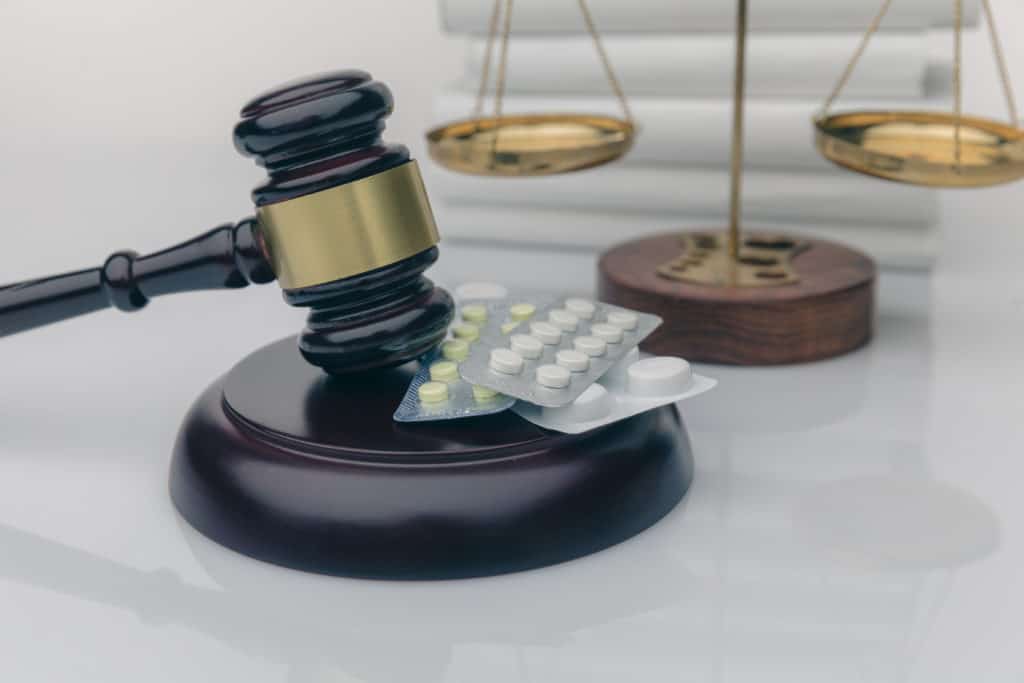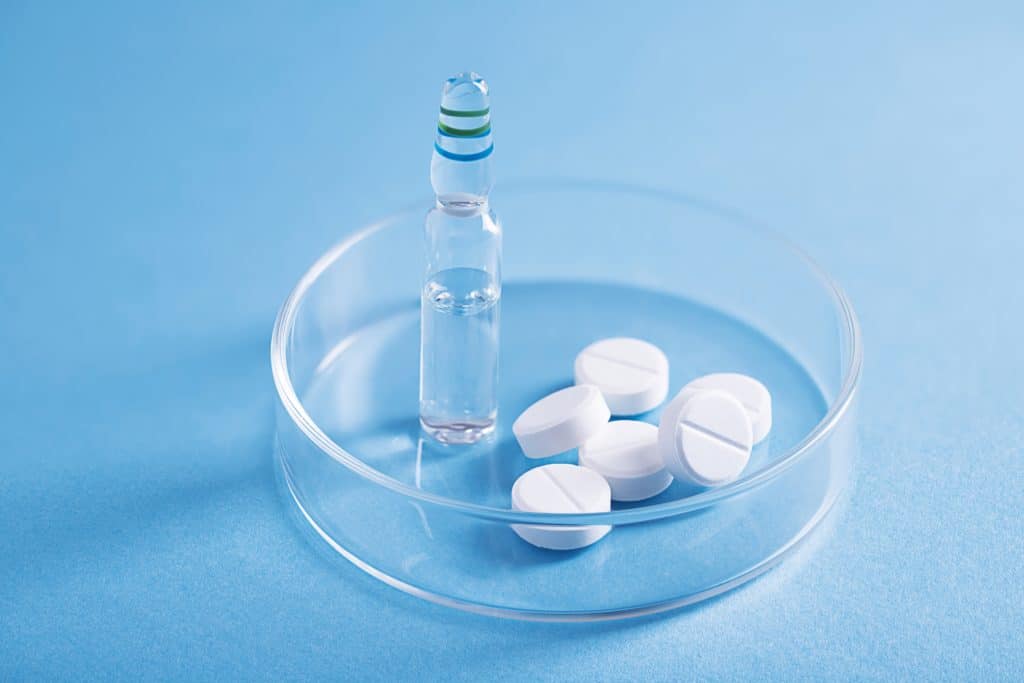The Importance of Pharmaceutical Patents
Pharmaceutical patents are essential for any company developing new drugs and related technology. Patents are a powerful tool for pharmaceutical companies to recoup their investment and generate profit. In addition, pharmaceutical patents can protect the sales of new drugs during limited periods when they’re free from competition with other products. It’s worth remembering that without such protection, there would be no way for innovators who develop groundbreaking treatments like antibiotics or vaccines to get compensated.
Drug development is a lengthy and costly process requiring additional government approval. Therefore, pharmaceutical patents may be lengthy, and serve as an incentive for drug development. Consequently, it is best to file pharmaceutical patents early during the development stage. Knowing patentability earlier on during the development process is significant, so appropriate modifications can be made to ensure patent protection and raise funds if required.
The Food and Drug Administration, FDA, ensures that a new drug or product will be safe and effective. The approval process requires compliance with rigorous testing programs in in-vitro, in-vivo, animal, and human (clinical trials). The FDA approval process starts with the filing and approval of a New Drug Application (NDA). The entire administrative approval process can often take years to complete. Therefore, the FDA approval process can be long and arduous. It’s a problem for medical device and pharmaceutical patentees because they lose time during this long wait. The delay in the FDA approval process can cause substantial losses due to delayed commercialization. But luckily, there is a legal provision that can help. The patent term restoration provision.
How long does a pharmaceutical patent last?
The pharmaceutical patent term is 20 years, which means that the patent protection duration is 20 years from the priority date. The priority date is first earliest date for filing a patent application. Additionally, the delays in the FDA approval process can be added to your pharmaceutical patent.
This, patent term restoration provision, was created to correct this disadvantage for a pharmaceutical patent holder as the Hatch-Waxman Act, under 35 U.S.C. § 156. The Hatch-Waxman Act allows you to add extra time to your patent term to account for the delay caused by the FDA approval process. Per this act, patentees can add extra term extensions to patents for human pharmaceutical products, medical devices, food and color additives, and methods for making or using such products. The Hatch-Waxman Act also provides a “safe harbor” provision for patentees under 35 U.S.C. § 271(e)(1), which serves to shield a party from a charge of patent infringement. Therefore, your activities for making, using, or offering to sell another’s patented product/process are protected from infringement if you conduct these activities to develop and submit information related to obtaining FDA approval for a product.

Patent law requirements for pharmaceutical patent
Patentability
To be a successful innovator in biotechnology, medical devices, pharmaceuticals, life science, and the diagnostics industry, you need to understand natural laws. While most inventions are centered around these principles, you cannot patent these laws because it would disrupt overall research and development based on these laws. For example, if one or multiple inventors clay claim ownership over something that’s essentially common knowledge among scientists working within this industry, it will hinder broader scientific development. Therefore, a patent is not granted for genes, proteins, etc.
However, you can patent biotechnology tools, medical devices, pharmaceuticals, therapeutic, life science products, diagnostic methods, compositions of matter, chemical compounds, synthetic proteins, antibodies, artificial nucleic acids, transgenic cells, transgenic organisms, etc.
Novelty
After you establish that your invention is patentable, you must ensure that it is novel and nonobvious. A prior art search can confirm the novelty of your product. Moreover, you must not disclose your invention on any public platform before filing a patent application.
Nonobviousness
Nonobviousness is a significant hurdle for inventions that meet the first two criteria of patentable subject matter and novelty.
Nonobviousness is a broad topic requiring its own blog. However, the invention must not be obvious to a person of ordinary skill in the art (pharmaceuticals in this case). I will present a few examples below, but briefly, unexpected results taught against in the prior art and secondary considerations are reasons to determine the nonobviousness of an invention.
Unexpected or unpredicted results from the combination of known elements are significant legal arguments based on KSR law.
Suppose a prior art article teaches that a combination of known elements (in your product) will lead to an outcome significantly poorer than your product. In that case, the prior art teaches not to combine the elements in your product; this is referred to as the teaching away concept. This could be an important argument for legally showing nonobviousness.
“Secondary” considerations are legal arguments based on the invention’s commercial utility, success, and need. These arguments include a long-felt need in the market that your product meets, failure by others to make the product, commercial success, copying by others, the acclaim of others, and licensing.
How do pharmaceutical patents work?
A pharmaceutical patent offers protection for a variety of aspects of drug structure, use, or manufacture; thus, making it difficult for your competitor to replicate and copy your pharmaceutical invention without your permission and infringing your rights.
Intellectual property law-develop a patent portfolio to best protect
Pharmaceutical patent applications can be filed as a continuation, continuation-in-part, divisional, etc. A key strategy for developing a patent portfolio is to leverage continuations, divisional applications, and continuation-in-parts (CIPs). By filing continuations and divisional applications, you can build on existing patent protection and continue to protect new embodiments or concepts. Meanwhile, by using CIPs, you can further expand your existing patent coverage in new areas that may be relevant to your invention. Ultimately, by utilizing all of these different tools effectively, you can greatly strengthen your patent portfolio and increase the level of protection afforded to your valuable invention.

Pharmaceutical patents can protect several structural, functional, and usage aspects of your drug invention, sometimes using only a single parent pharmaceutical patent application. Therefore, pharmaceutical patents are an important tool for any company or individual looking to protect their intellectual property. Below are a few examples of pharmaceutical patents.
Pharmaceutical patents for new formulations
New formulations that are clinically superior to previous drugs can be patented and offer increased protection for your company’s financially successful product. For example, developing a more convenient dosing regimen or one without side effects may make it easier for patients to take their medicine consistently, increasing sales of all products based on this newer formula.
A pharmaceutical patent example – Lilly developed a new formulation for its blockbuster drug Prozac; this new patented formulation allowed once-weekly, sustained-release Fluoxetine. In addition, they obtained FDA approval for this new formulation. Similarly, Bristol-Myers Squibb developed a new extended-release formulation of Metformin hydrochloride permitting once-daily dosing to treat type II diabetes. This unique formulation of a known drug, Metformin hydrochloride, was patented and approved by FDA and is marketed as Glucophage.
A new route of administration for know pharmaceuticals
Even though a drug and its use may be previously known, new routes of administration or new drug delivery methods can be patented. This may be a new pharmaceutical composition, a delivery device, or a new method of use or manufacture; you can patent this new composition, apparatus, and process.
Pharmaceutical patents for new treatment
Patents can be obtained for new uses or treatments for previously known chemicals. If you discover a chemical compound that can treat cancer, the same chemical compound was previously known as a food preservative and additive. You can patent the compound’s methods to treat cancer and pharmaceutical formulations containing the compound.
For a pharmaceutical patent example, Finasteride was initially used to treat benign prostate enlargement, but later it was discovered that it is effective in hormone replacement therapy. As a result, additional patents for treating male pattern baldness were granted. Finasteride for hair loss treatment is marketed under the brand name Propecia.
Pharmaceutical patents for new combinations
A new combination of two or more previously known chemical compounds can result in a completely new drug for a different medical indication. The new combination must be nonobvious because the combination results are unexpected. For a pharmaceutical patent example, the combination of compound A and antibody B results in an unexpected new use or efficacy and synergy. Additionally, nonobvious can be dues to the teaching away from the invention. For example, a prior art paper taught that administration of Compound A to a patient taking Antibody B resulted in potentially lethal side effects. However, you discovered that this combination could treat specific cancer without the legal side effects at the effective dose.
Another pharmaceutical patent example -Olanzapine was patented to treat schizophrenia, and Fluoxetine was patented as an anti-depression medicine. However, a combination of these two drugs, Olanzapine and Fluoxetine, to treat bipolar disorder.
Pharmaceutical patents for new chemical structure
A chemical compound with the same chemical composition can have two or more different three-dimensional structures. For example, the two enantiomers of a chiral compound are non-superposable and non-identical. In addition, the enantiomers may have different physical and biological properties, such as interaction with cellular proteins. A ‘racemate’ is a mixture consisting of an equal combination of pairs of enantiomers.
Some pharmaceutically active compounds are chiral, meaning that one form of the drug is ineffective or even dangerous while another has all the biological effects. Many pharmaceutical patents are on biologically active compounds made up of a single enantiomer because there are several advantages of one enantiomer product. They are a less complex pharmacokinetic profile, while they are more pharmaceutically selective with a better therapeutic index. In addition, they may have decreased interaction with other drugs and a better relationship between blood plasma levels and biological effects.
Conclusion
Applying for a patent is a complex process, and it’s important to make sure that all the requirements are met to avoid any delays or problems down the road. Consulting with biotech, pharmaceutical, medical patent attorney or patent agent can ensure that your application is in order and taken all the necessary steps. In addition, hiring a professional to help with your patent application can save you time and money in the long run, and it will give you peace of mind knowing that your product is adequately protected.
An initial meeting can be 30 minutes to an hour. During this meeting, you will discuss your invention so that we have all relevant information; this includes details of your invention, previous patents, where you are in your business plan, etc. Most patent attorneys bill at $495 per hour, but we offer a free initial consultation. Call us for a free initial consultation.
At Affordable Patent Agency, we are committed to making your innovation possible. We offer high-quality patent services typically only available at large law firms. However, we understand that not everyone can afford the high costs associated with these services. Therefore, we offer a flat low-cost fee structure that makes our services accessible to everyone. Whether you’re a small business owner or an individual inventor, we can help you protect your ideas and get the recognition you deserve. Contact us today to learn more about our services and how we can help you make your innovation possible.

